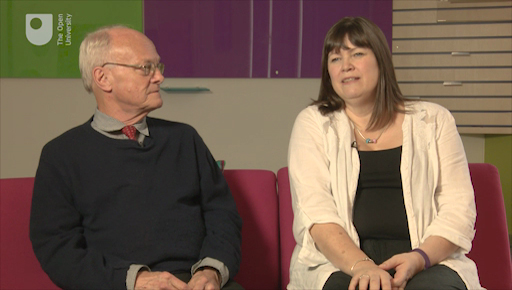5 Identity, difference and the voluntary sector
The voluntary sector attracts such a diverse range of people – from the professionals from other areas giving their time for free, to enthusiastic and idealistic volunteers, people with deep sector expertise and to those simply volunteering to enjoy themselves and learn. These are all people who need to come together to engage in collaborative leadership.
Here are some of the work identities we think are important to the sector:
- The volunteer: many volunteers have professional lives away from the organisation for whom they volunteer, others volunteer in the hope of building valuable skills for the future. Volunteers get involved for a variety of reasons. Some for deeply personal reasons – volunteering at a hospice, for example, because of the care given to a loved one in the past. Some people simply enjoy the social side of volunteering. Others hold certain ideological, spiritual or moral commitments that drive them to get involved. The implication is that volunteers also contribute a range of quite different things, according to their preferences and skills. Some people may also contribute professional services for free.
- The subject expert and professional: subject experts usually undergo years of training in their areas of expertise (finance, law, human resources, and so on). They usually identify with at least two different spheres, the organisation in which they work and their broader profession outside the organisation.
- The manager: managers may start as subject experts and learn management along the way. Management comes with its own language, its own techniques and practices. Managers are generalists by definition. Few people choose in advance that they want to become managers – rather it is something that they grow into as they advance their careers.
- The trustee: trustees can be appointed because of their professional knowledge, experience of overseeing other organisations or because of their passion for a cause. The trustee is an interesting identity because it sits somewhere between volunteer, subject expert and manager.
The following case study from Scotland illustrates the interplay between these different identities, and the way in which one organisation recognises and respects these identities in the practice of collaborative leadership.
Case study 1 Collaborative leadership: Food Train
Food Train provides four services for older people across seven regions in Scotland: shopping, simple repairs/help at home, befriending and library book delivery. A fifth service, Meal Maker, connects people who love cooking and are happy to share an extra portion of a home cooked meal with an older neighbour – it operates nationally across Scotland.
Food Train has been operating since 1995, beginning as a small project in Dumfries run by volunteers for the first seven years. By 2018, the organisation employed 43 staff, with 1200 volunteers across Scotland, engaging approximately 2600 older members who are both service users, and members of the charity.
Given the speed of the organisation’s growth, one of the Trustees of Food Train proposed involvement in an ACOSVO /CO3 ‘Path to Impact’ partnership programme, to support core capacity development, and enable people with different roles and diverse identities in the organisation to share their views and identify key actions for change. Whilst there were no specific areas of concern, it was hoped the process would help the organisation to pause and reflect on both what was going well, and what challenges needed consideration.
Through the facilitated process over 2016–18, the Food Train team found there was a gulf between Board, staff and volunteer perceptions; the Board’s perception of capacity and capability was in excess of what the staff and the volunteers felt was achievable.
A number of internal changes were made including an increase in the amount of Trustee contact with the organisation, with Board Meetings taking place in branches around the country and Trustees having the opportunity to talk to some of the volunteers over lunch. As a result, the gap between Board and Staff assessment of the organisation has narrowed.
A more structured approach to staff meetings was introduced, and Food Train also ran a mini leadership programme for managers, who now maintain a peer support network which meets three times a year in a social setting. It was decided to create more time for staff and volunteers to get together to create opportunities for peer support and training.
Michelle Carruthers, Chief Executive, Food Train commented “It was important for us to get that perspective of volunteers who do service delivery and are very removed from the operational running of the business of the charity, from staff ... who had only been with us a very short space of time, and also in Trustees who had been with us a long time.”
Finding a way to hear the voices of diverse people within the organisation proved to be a crucial aspect to identifying and implementing change and improvement.
There are two key points to be made in relation to these identities. The first is that each is assembled over the years due to training and experience. The second is that no one fits neatly into any of these boxes. We break the confines of our own identities – within our own heads and externally, in our interactions with others in collaborative leadership. It has already been noted that people become volunteers for a number of different reasons and pursue volunteering in a number of different ways. As you reflect on the difference that helps to build your identity, you appreciate even more how much your identity can be opened up, even as you remain committed to your own beliefs and values. Working and talking with others in collaborative leadership can also help you see possibilities for stretching and growing your own identity.
Even if you see your work identity in certain, quite narrow ways, others do not construct your identity in this way. They see you predominantly via the filter of their own identifications. For example, Harrison et al. (2012) note that the role of the charity board chair, despite the statutory obligations of such a post, are perceived in ways that exceed these boundaries. The authors note that chairs are looked upon by members of staff and volunteers for leadership, despite leadership not being in the job description. Chairs are also expected to demonstrate a range of ‘softer’ behaviours (emotional intelligence, affinity for teamwork) not normally associated with this role.
In other words, identities, even professional ones, are capable of growth, and it is worth you reflecting on whether you are able to make the most of the diverse identities housed within your organisation - and beyond in your collaborative leadership work.
Now watch the following video, an interview with Alison Miller, Chief Executive, and John Wallace, Chair, of St Francis’ Children’s Society. In the video Alison and John reflect on how they work within their identities as chief executive and chair.

Transcript
John and Alison talk explicitly about their shared leadership, but as you know, these things are simpler in principle than practice. Voluntary organisations are a mix of very diverse people and identities. John refers to himself as a ‘critical friend’, which is a powerful way of saying that good chairs will feel able to offer constructive critique (you will learn more about this in Week 5). Offering critique from a position of difference is an important part of collaborative leadership. Most importantly, Alison and John talk about building and nurturing personal relationships of trust. Putting the work in at this level enables them to tackle difficult problems when they arise and make the most of their diverse identities in practice. With that in mind, you will now move on to think about ways in which voluntary organisations can draw on the strengths of diverse identities.

